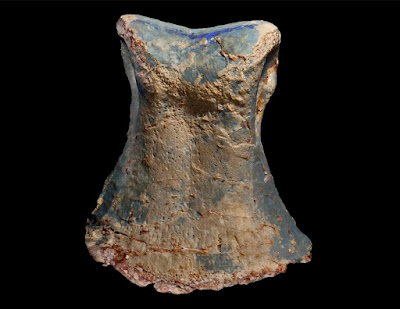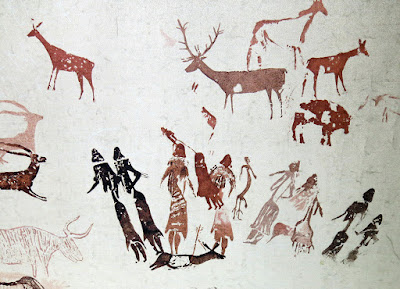WHAT THE HELL WERE THE DINOSAURS DOING IN AN OPAL MINE
MINING OPAL PERHAPS
Scientists have revealed that fossils from an underground opal mine near Lightning Ridge, outback NSW (Australia), include remains from a herd of dinosaurs, among them a new dinosaur species and the world's most complete opalized dinosaur.
 |
| Artist's reconstruction of Fostoria dhimbangunmal [Credit: © James Kuether] |
The new dinosaur has been named Fostoria dhimbangunmal in honor of opal miner Robert Foster, who discovered the fossils in the 1980s. The species name, dhimbangunmal (pronounced bim-baan goon-mal), means "sheep yard" in the local Yuwaalaraay and Yuwaalayaay languages, in recognition of the Sheepyard locality where the bones were found.
In total, parts of four Fostoria skeletons were unearthed, ranging from small juveniles to larger animals that might have been five meters in length, prompting speculation they were part of a small herd or family.
 |
| A fossil vertebrae of the newly discovered dinosaur species Fostoria dhimbangunmal discovered in opal [Credit: Robert A. Smith/Australian Opal Centre] |
Jenni Brammall, paleontologist and special projects officer of the Australian Opal Centre, says, "Fostoria has given us the most complete opalized dinosaur skeleton in the world. Partial skeletons of extinct swimming reptiles have been found at other Australian opal fields, but for opalized dinosaurs we generally have only a single bone or tooth or in rare instances, a few bones. To recover dozens of bones from the one skeleton is a first."
 |
| A fossilized toe bone of Fostoria dhimbangunmal found in opal [Credit: Robert A. Smith/Australian Opal Centre] |
The discovery comes on the back of the new small plant-eating dinosaur also from Lightning Ridge, Weewarrasaurus pobeni, which was named by Dr. Bell and colleagues late last year.
"The rate of discovery is astounding. On average, there's at least one new dinosaur discovered around the world every week," Dr. Bell said. "With more palaeontologists and scientists looking further afield than ever before, it's an exciting time for dinosaur lovers everywhere, especially in Australia."
The new research was published in the Journal of Vertebrate Paleontology.
Source: University of New England [June 05, 2019]
Read more at https://archaeologynewsnetwork.blogspot.com/2019/06/herd-of-dinosaurs-has-been-discovered.html#fxpp5LTOLTLDmwto.99











